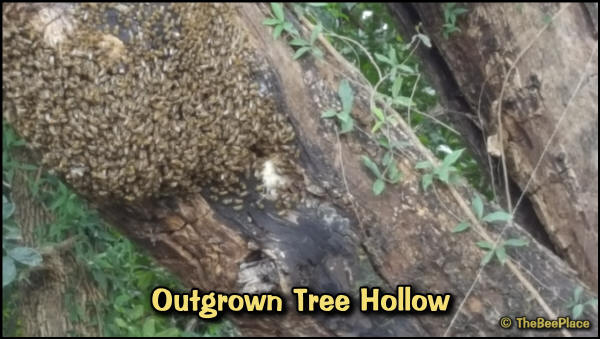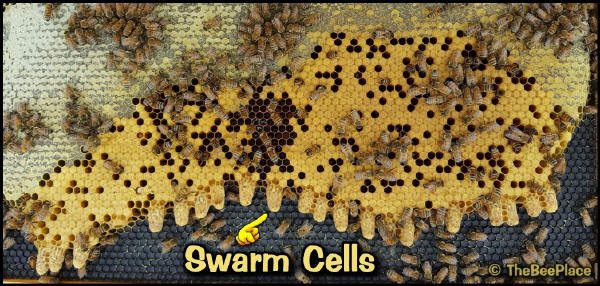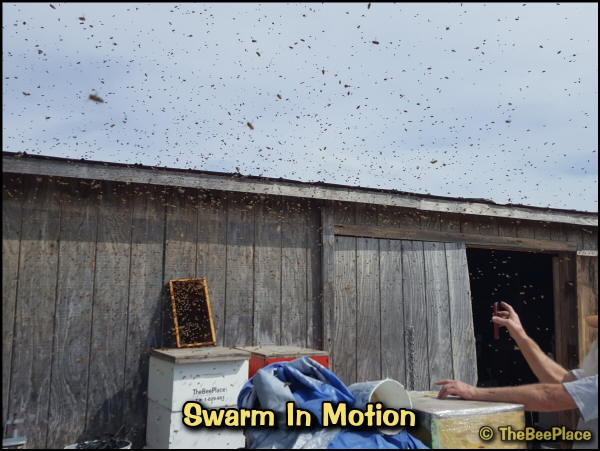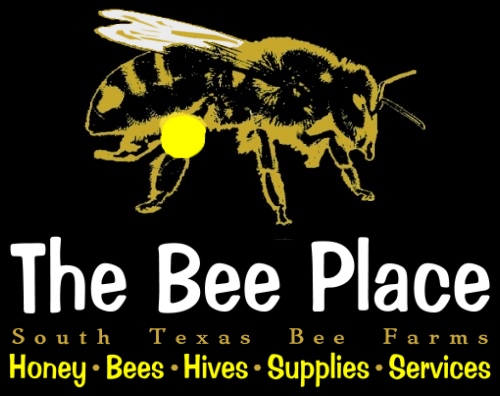|
Swarming -
How
bees reproduce
Q: What is bee swarming?
Swarming, simply put, is the method in
which honey bees reproduce and procreate the species. Once a colony of bees
reaches the maximum capacity of a current living space (think - filling the
cavity of a hollow in a tree with honey comb and bees) and there are ample
resources available, such as plenty of food producing blooms in the spring,
the colony receives signals from this growth state that they are healthy
enough to reproduce.

Once the signals trigger the colony to
swarm, several wheels are set into motion. First, the current queen, knowing
she will be leaving soon and taking the bulk of the worker force with her to
start anew, will lay special eggs called Queen Cells or Swarm Cells (see below) for the remaining members to
raise her successor.

Second, the mother queen (which
typically lays upwards of 2,000 eggs a day) will be put on a diet of sorts
and slow down her laying / brood production. She will need to trim down to
get into "flying shape" and prepare for a journey that could be several
miles to a new home.

And finally, after about a week when she
is ready, the colony puts out the signal that it is time to go. At this
point a mass exodus takes place and several thousand bees, including the
queen and roughly 75 percent of the workers, and several dozen drones (male
bees) head for the exits and form a cloud.

This cloud of bees, known as a "swarm in
motion" will find a place to land and rest while they send out scouts in
search of a new cavity of a specific size and basic shelter requirements to
accommodate their future needs. They may rest on about any surface or
structure, and occasionally on the ground, but typically about 8 – 12 feet
off the ground on a tree limb.

After what could be a few
hours or even several days of scouts reporting future home sites and
additional members checking these sites for their needs, a voting system is
used to select the site of choice. It is not until the entire inspection
team all agree on one single best location, and only then, the swarm takes
flight again and they all move into the new home site. On rare occasion, the
scouts and inspectors do not find and/or agree on a cavity soon enough and
the colony will begin to build comb where they rest. This creates what we
call an exposed or “open air hive” see below. Not typically found up north,
but a beautiful sight that is occasionally found in our region.

Shown above: Progressive
photos from an Open Air Colony relocation/removal.
The bottom two images are the before photos, followed by the images taken
after gently vacuuming bees and carefully dissecting the comb structure and
rebuilding it into hive boxes. The entire process took several hours and
resulted in two deep hive boxes full of bees. The main image in the center
illustrates the heart of the brood nest with the typical rainbow pattern of
food stored above the darker nursery area.
It should be noted that while in the
swarm mode and resting, the colony is not at all aggressive. They have no
young or food to protect, so not until they have a new place to call home
and the queen begins laying and the workers bring in food stores they are
not likely to offer a sting, even if approached. I rarely wear any
protective gear when capturing swarms.
Q: What should people do
if they see a hive on their property?
First and foremost, even though a swarm
is normally docile, a cluster of bees is not automatically going to be a
"swarm". It is possible to mistake an open air colony (see above) for a
swarm in resting mode. Therefore, it is always best to maintain a safe
distance and contact an experienced beekeeper. We have a good deal of local
beekeepers in the San Antonio area that are qualified and permitted to
assist when needed. Contact Us for
more information regarding swarm
capture and bee colony removal services.
Secondly, be aware that a swarm differs from an active “hive” or properly
termed an active colony of bees. Meaning, technically the “hive” refers to
the housing/structure and the bees are the inhabitants or the colony in the
hive. With that said, the bees and housing are typically referred to as a
“hive”.
If the bees are clustered on a structure, like a tree limb, that is
typically a swarm resting and not aggressive. If the bulk of the bees are
not visible, and only a few are seen coming and going through an opening,
like a crack in a wall or hollow opening of a tree, then keep away and know
they have taken up residence in that space and will defend their home and
young just as we do with our own homes and loved ones.
And finally, leave it to the experienced beekeepers to assist
with removals and swarm capturing because you never know what you may run
into in terms of genetics. Be aware that we do live in the south where
Africanized Bees are known to be a
part of the feral bee population and despite the Colony Collapse Disorder
that effects managed hives, they are still surviving in the wild here after
being in this area for over 30 years.
Click here for a short video
showing the capturing of a small swarm.
Q: Is there any other
information you think might be relevant to share?
Honey Bees are a vital part of our
ecosystems and need our support in terms of managed hives by beekeepers, but
also as a community. We all need to be aware that putting out poisons in our
landscapes and gardens can have effects beyond our view and even our
imagination. If a pesticide, fungicide or herbicide must be used to control
some sort of unwanted guest in the yard or garden, please consider using
granular forms versus liquids or any especially hazardous powders and dusts
that will cling to a bees hair like pollen and will be carried back into the
nest and have devastating effects on the entire colony.
We need our pollinators and we have many
less expensive organic choices other than chemicals when controlling
unwanted pests, weeds and even fungi in our environment. A little research
in these areas can make a huge difference.
Ultimately, we need to teach the next generation to be
stewards of the environment we pass on to them and encourage them to be an
active positive part of the ecosystems. The joy of sharing with others can
bring rewards beyond expectations.
|
